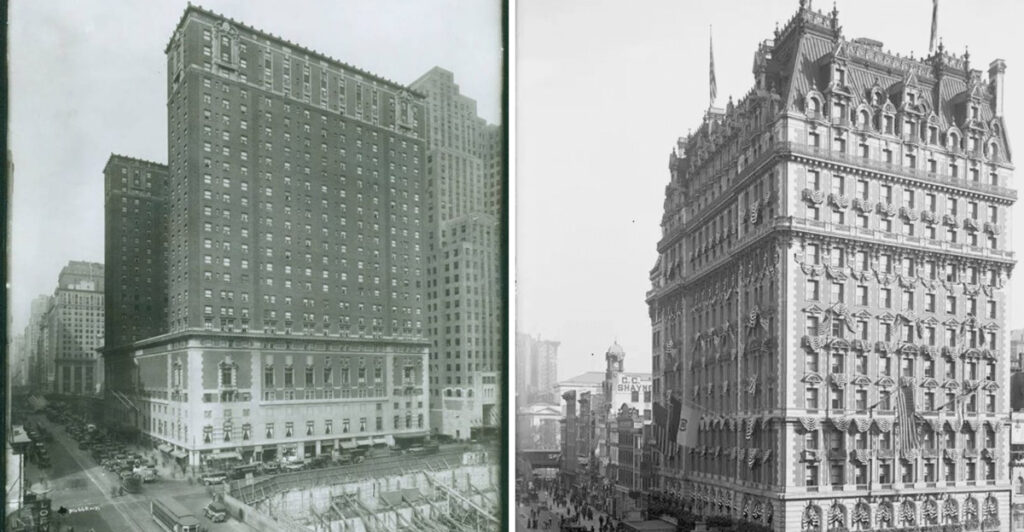New York City, a bustling metropolis known for its iconic skyline and vibrant culture, has been home to many legendary hotels. Over the years, some of these architectural and cultural landmarks have disappeared, leaving behind tales of grandeur and nostalgia. This article takes you on a journey through 19 of these lost hotels, each with its own unique story.
The Astor House
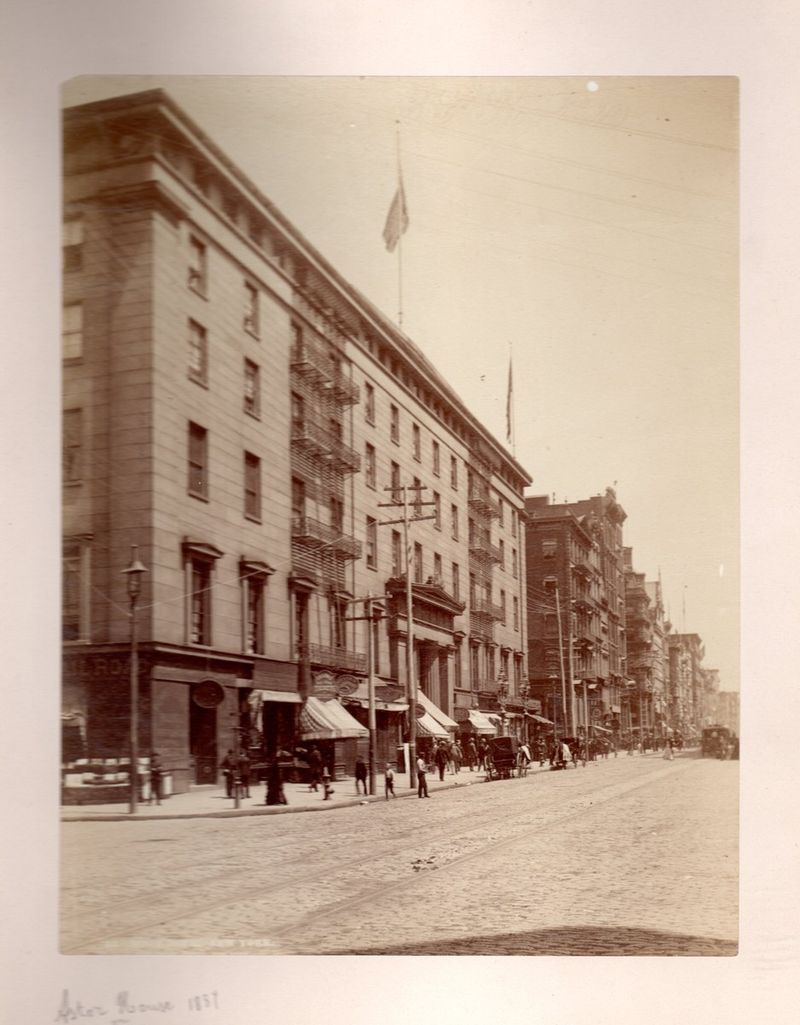
The Astor House stood as a symbol of opulence in the heart of Manhattan in the 19th century. Known for its luxurious accommodations, it was a favorite among dignitaries and celebrities.
Guests were treated to lavish rooms and exquisite dining, making it a hallmark of high society. Its decline began as the city evolved, eventually leading to its demolition in 1926.
Today, the memories of its grandeur linger in the stories of those who once walked its halls. The Astor House remains a beloved chapter in New York’s ever-changing landscape.
The Waldorf-Astoria (original)
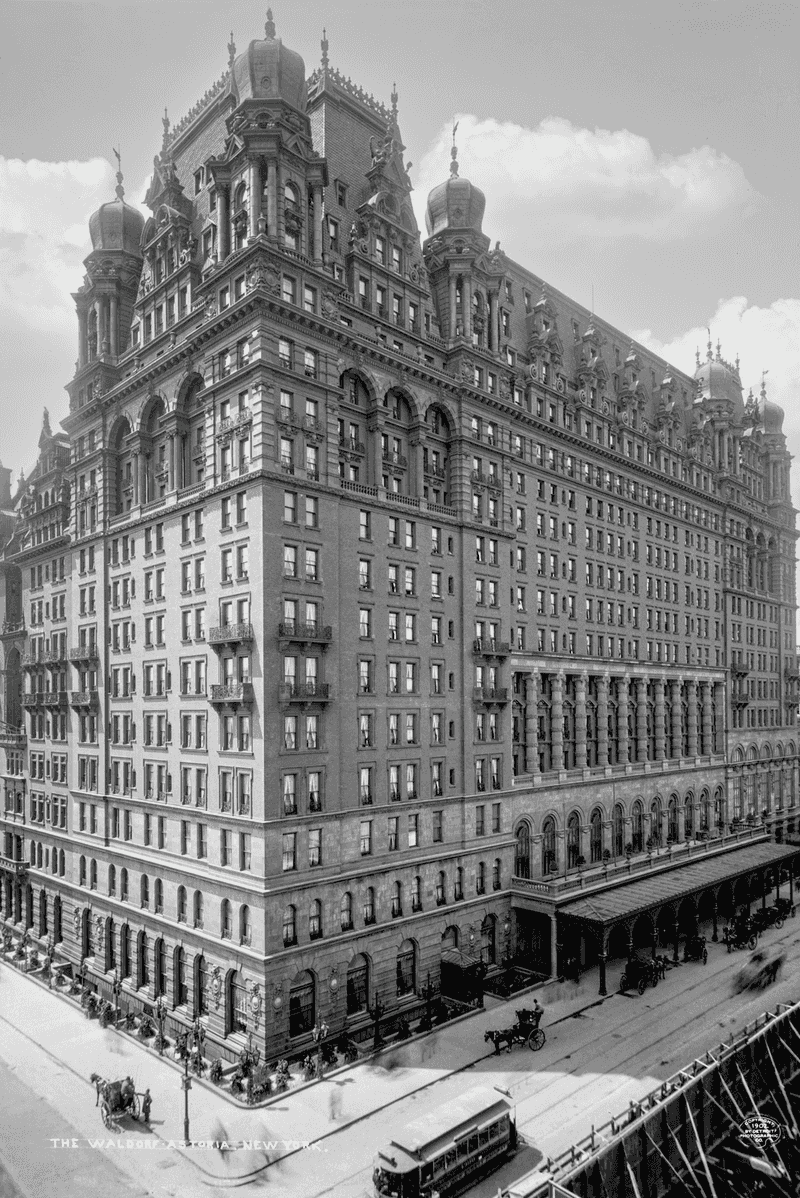
The original Waldorf-Astoria was a beacon of luxury and innovation in the late 19th century. Located on Fifth Avenue, it introduced the concept of the modern luxury hotel.
With its extravagant ballrooms and cutting-edge amenities, it attracted the elite from around the world. By 1929, it was razed to make way for the Empire State Building.
While its successor stands today, the original’s legacy is immortalized in the opulence it once embodied and the memories it cherished. Its spirit lives on in the annals of New York’s grand history.
The Knickerbocker Hotel
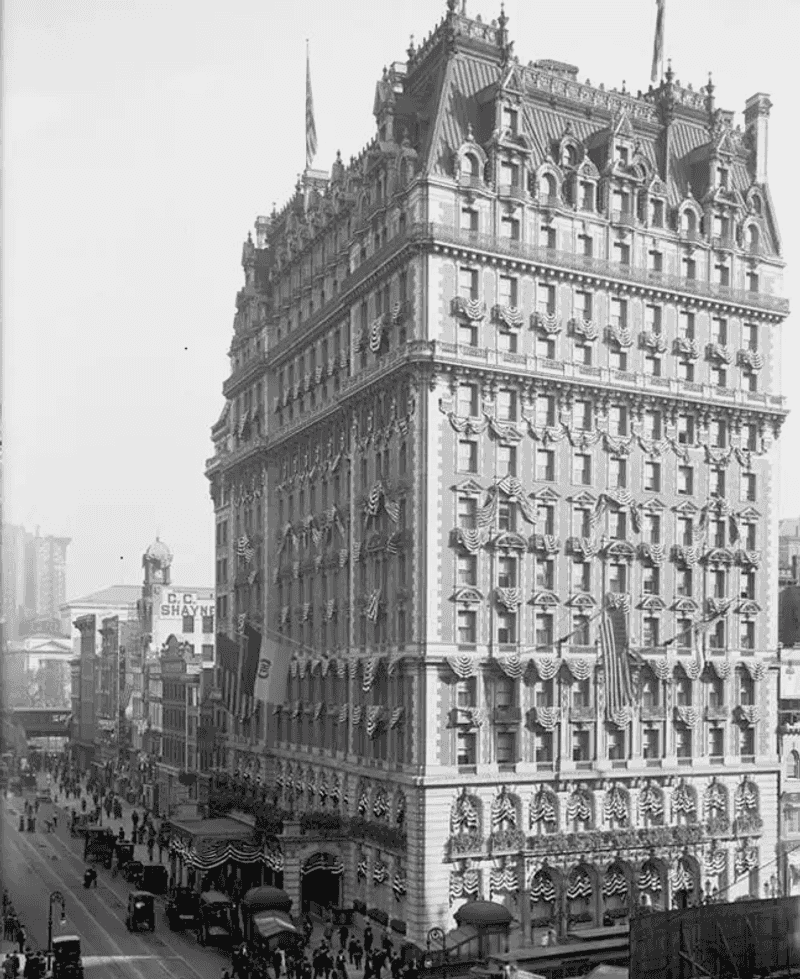
Situated in the heart of Times Square, the Knickerbocker Hotel was an icon of early 20th-century elegance. Built by John Jacob Astor IV, it became famous for its opulent interiors and lively atmosphere.
Its rooftop bar, the “42nd Street Country Club,” was the birthplace of the martini. However, the hotel closed its doors in 1921, later repurposed for commercial use.
Despite its transformation, the Knickerbocker’s influence remains, echoing the glamour of a bygone era. Revived in spirit, it speaks to New York’s enduring allure and vibrant history.
The Plaza (original ballroom)
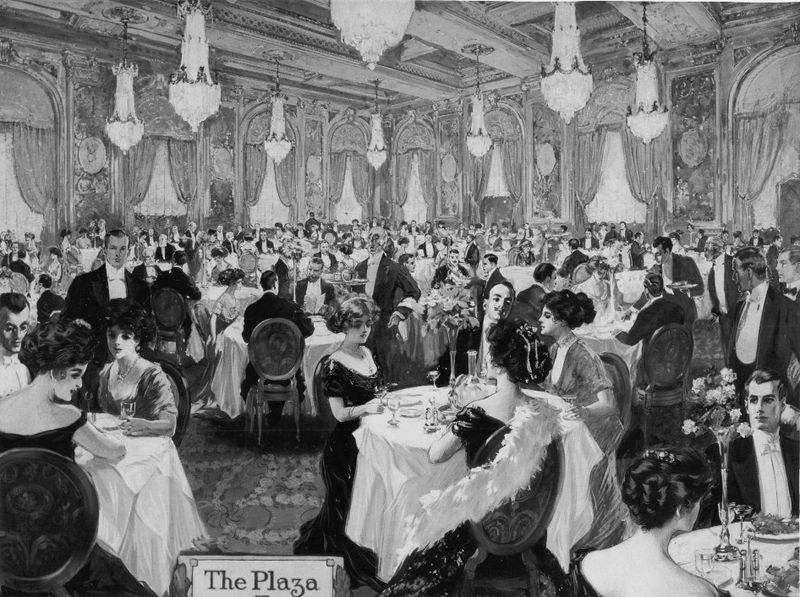
The Plaza’s original ballroom was a scene of elegance and sophistication. Known for grand events and high-society gatherings, it was a jewel in New York’s social crown.
Hosting everything from lavish parties to influential meetings, it was a hub of cultural activity. Renovations in the late 20th century saw significant changes, altering its original charm.
Today, while The Plaza remains, the original ballroom’s grandeur is a nostalgic memory. Its legacy persists in the stories of those who danced under its shimmering chandeliers. An emblem of New York’s glamorous past.
The St. Regis (Palm Court)
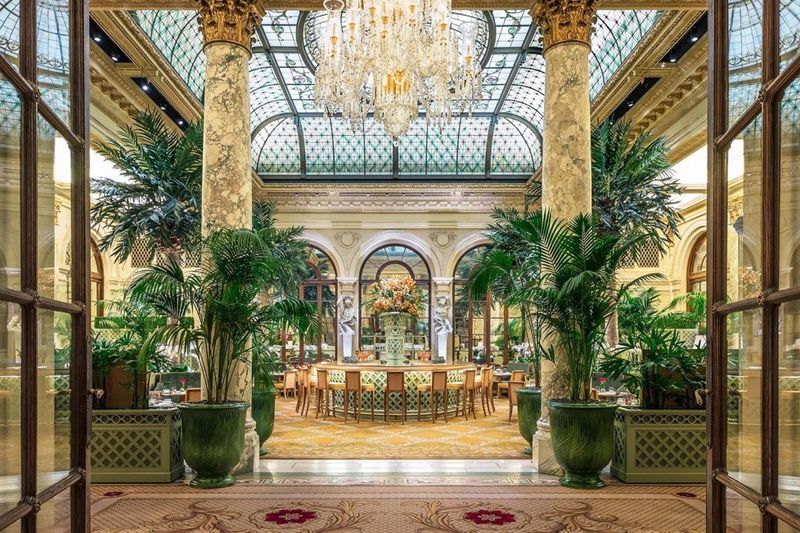
The St. Regis, with its Palm Court, offered a serene oasis in the bustling city. Known for its luxurious décor and refined service, it was a favorite among New York’s elite.
Guests enjoyed afternoon tea under its lush canopy of palms, enveloped in an atmosphere of sophistication. Over the years, the space was transformed, losing some of its original splendor.
Today, the memories of the Palm Court’s elegance linger, a testament to New York’s history of luxury and grace. Its story continues to captivate those who cherish the city’s opulent past.
The Commodore Hotel
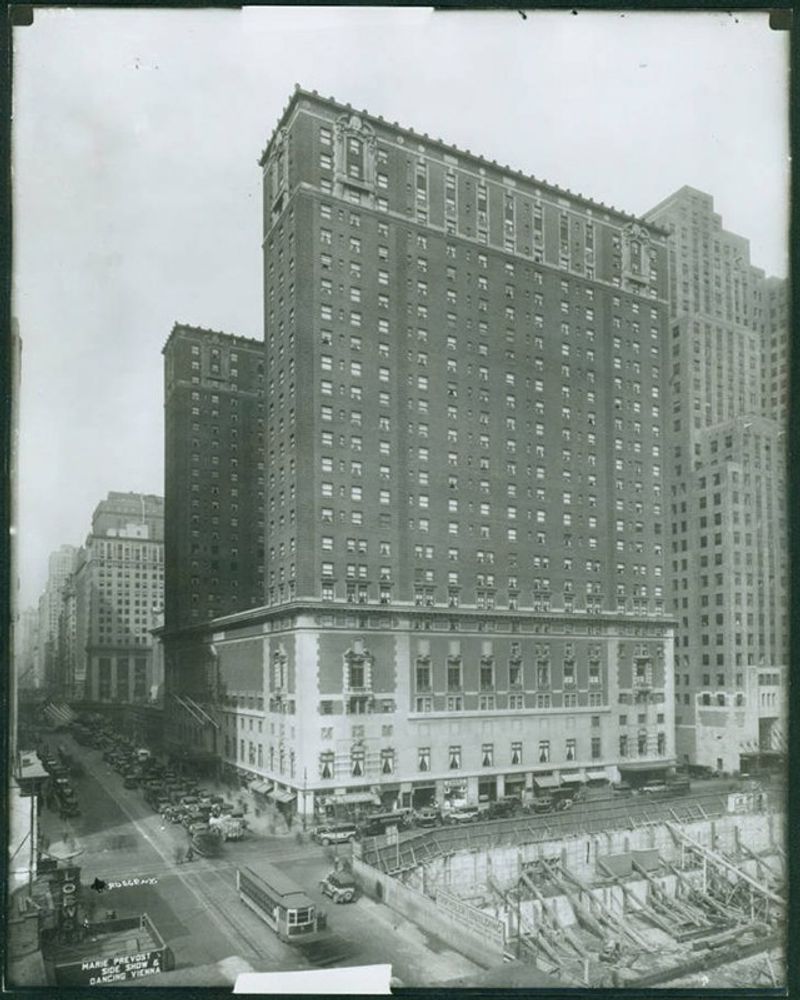
The Commodore Hotel, nestled near Grand Central, was a testament to early 20th-century hospitality. Known for its grandeur, it played host to countless travelers and events.
Its elegant design and prime location made it a popular choice, until modern developments overshadowed its charm. By the 1970s, it had fallen into decline, later rebranded as the Grand Hyatt.
Though its name changed, the spirit of the Commodore lives on in the stories of its vibrant past. A symbol of New York’s dynamic evolution, it remains a beloved memory.
The Hampshire House
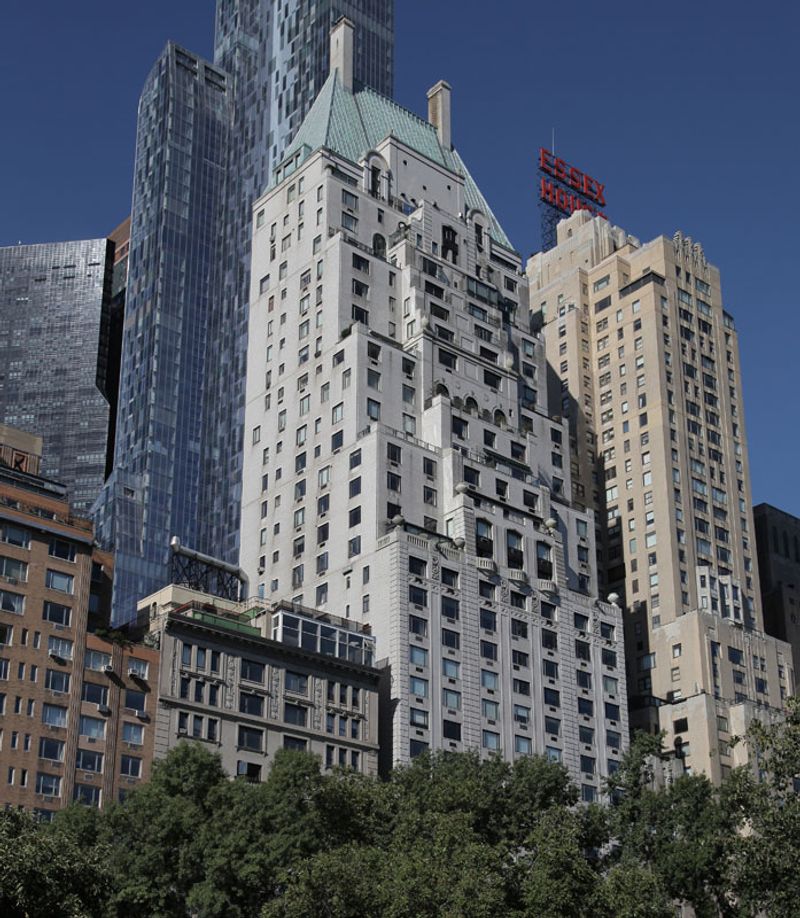
Hampshire House, with its distinctive Art Deco design, offered luxury living overlooking Central Park. Known for its stylish interiors and prime location, it attracted a discerning clientele.
The allure of its sophisticated ambiance made it a coveted address. Over time, changes in the cityscape led to its transformation, and the original hotel ceased operation.
Yet, Hampshire House’s legacy endures, a symbol of a glamorous era in New York’s history. Its story, marked by elegance and style, continues to enchant those who remember its glorious past.
The Hotel Astor
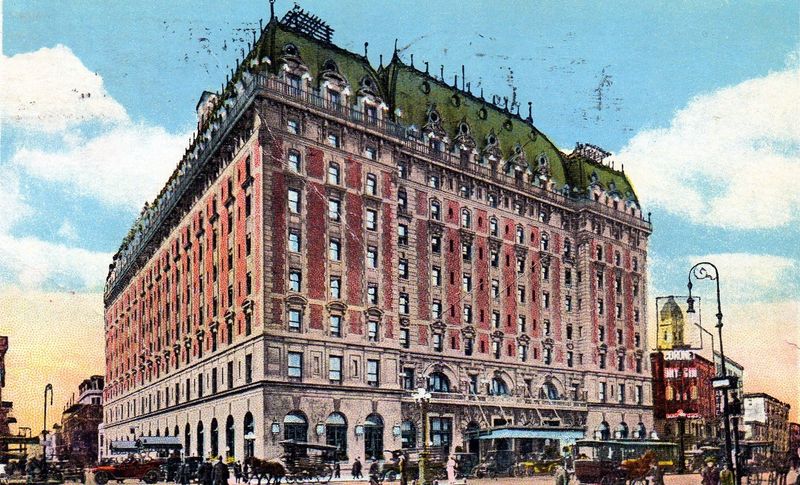
Hotel Astor was a beacon of luxury in the early 20th century, located in the heart of Times Square. Known for its opulent interiors and grand events, it was a hub of social activity.
The lavish ballroom and exquisite dining spaces drew the elite, making it a cultural landmark. As the city modernized, the hotel faced challenges, leading to its demolition in 1967.
Though gone, the spirit of Hotel Astor lingers in the memories of its grandeur and vibrant atmosphere. A cherished chapter in New York’s storied past.
The Gotham Hotel
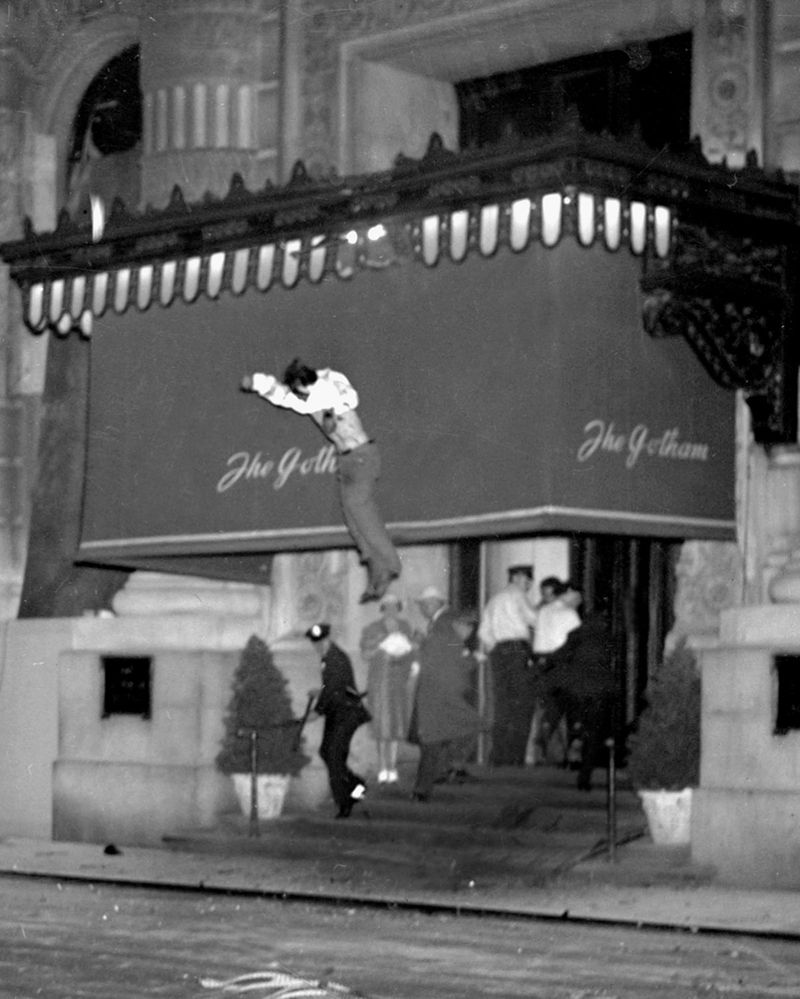
The Gotham Hotel, a symbol of 1920s luxury, was known for its Art Deco style and sophisticated ambiance. Situated in midtown Manhattan, it catered to an elite clientele.
Its lavish interiors and exclusive services made it a popular destination during its heyday. However, the passing decades saw a decline, and it eventually closed its doors.
The Gotham Hotel’s legacy remains in its contribution to New York’s rich architectural tapestry. A testament to the city’s ever-changing landscape, it continues to inspire nostalgia for a bygone era.
The Algonquin (Round Table)
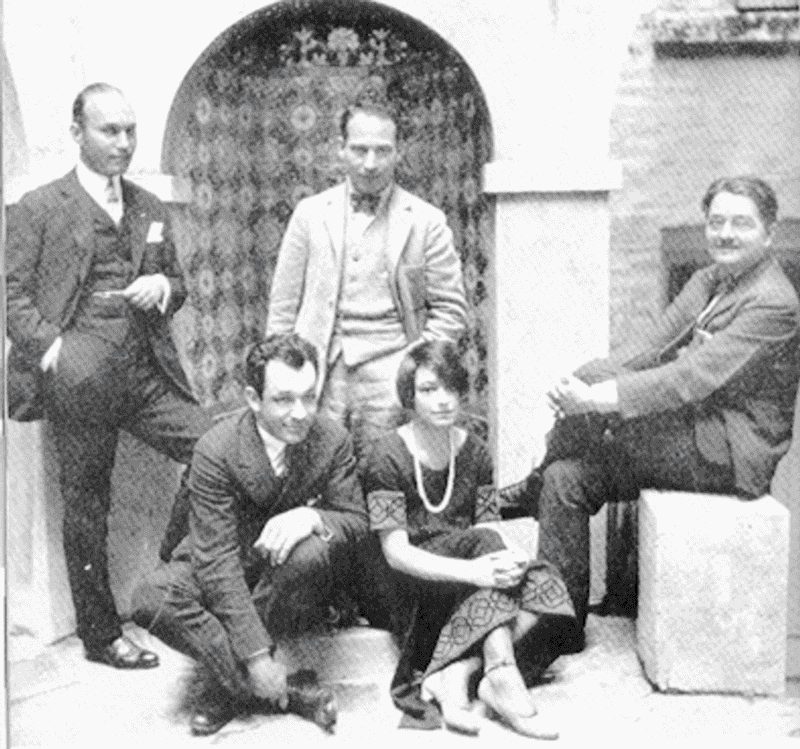
The Algonquin Hotel’s Round Table was a legendary meeting place for writers and artists in the 1920s. Known for its creative atmosphere and intellectual gatherings, it fostered a vibrant cultural scene.
The likes of Dorothy Parker and Robert Benchley were regulars, contributing to its storied history. While the hotel remains, the original Round Table’s essence has faded with time.
However, its legacy continues to inspire those who cherish New York’s literary past. A symbol of artistic synergy, the Algonquin’s story endures in the annals of cultural history.
The Ansonia Hotel
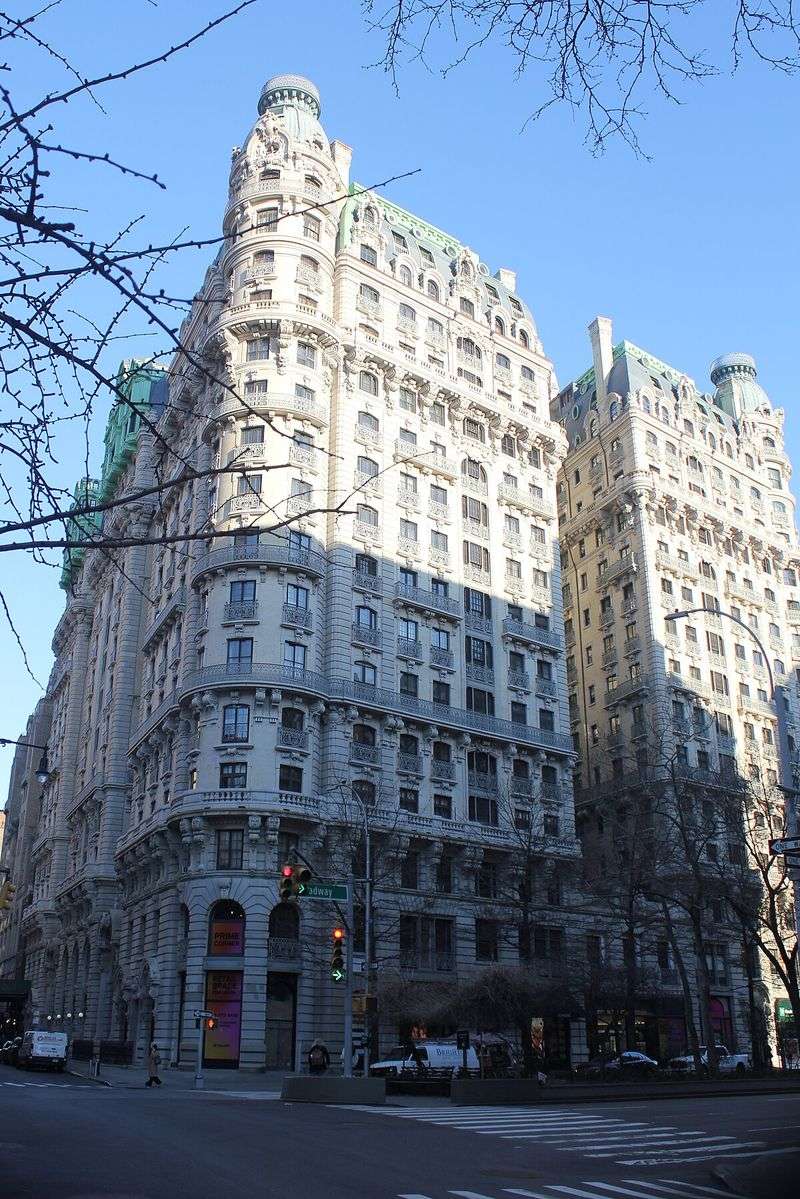
The Ansonia, with its Beaux-Arts design, was a unique blend of luxury and residential charm. Situated on Broadway, it attracted artists and musicians with its eclectic style.
Known for its opulent suites and famous residents, it was a cultural landmark in the early 20th century. Over time, the building underwent significant changes, altering its original character.
Despite this, the Ansonia’s legacy endures, a testament to New York’s diverse and dynamic history. Its story, filled with creative spirit and architectural beauty, continues to captivate.
The Ritz-Carlton (Madison Avenue)
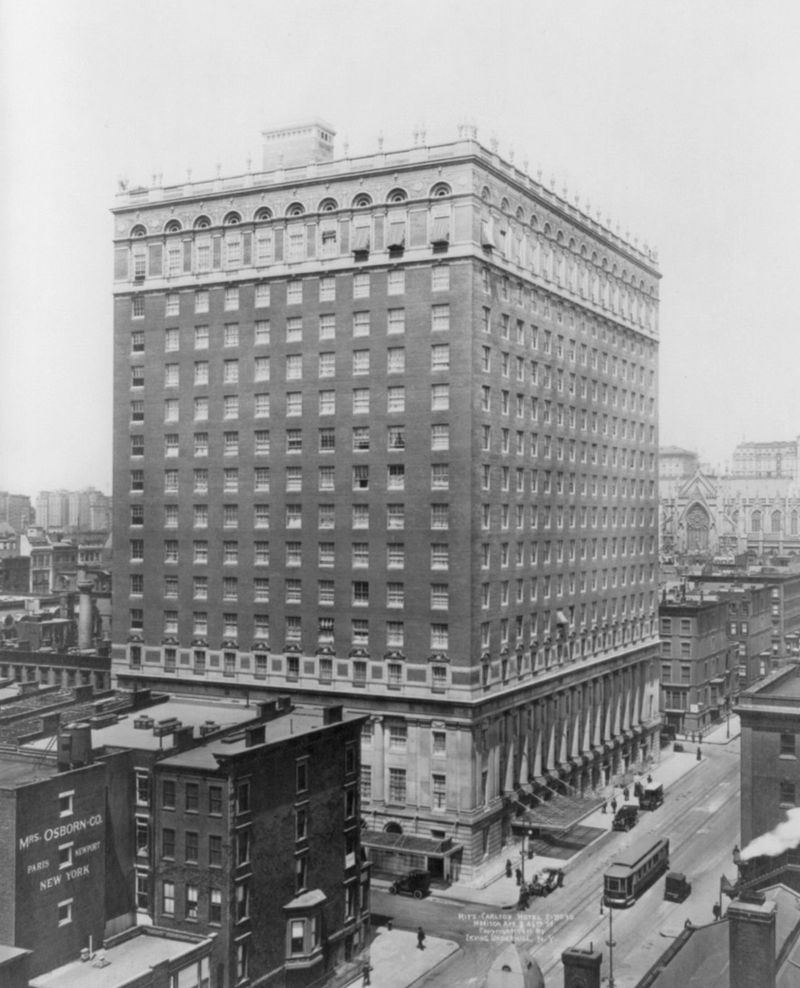
The Ritz-Carlton on Madison Avenue was synonymous with luxury and elegance. Known for its exquisite décor and refined service, it was a favorite among high society.
The hotel’s reputation for opulence made it a symbol of sophistication in early 20th-century New York. However, changing times and economic challenges led to its closure.
Today, the memories of the Ritz-Carlton’s grandeur linger in the stories of its illustrious past. A cherished chapter in New York’s history, it remains an icon of timeless elegance.
The Barclay Hotel
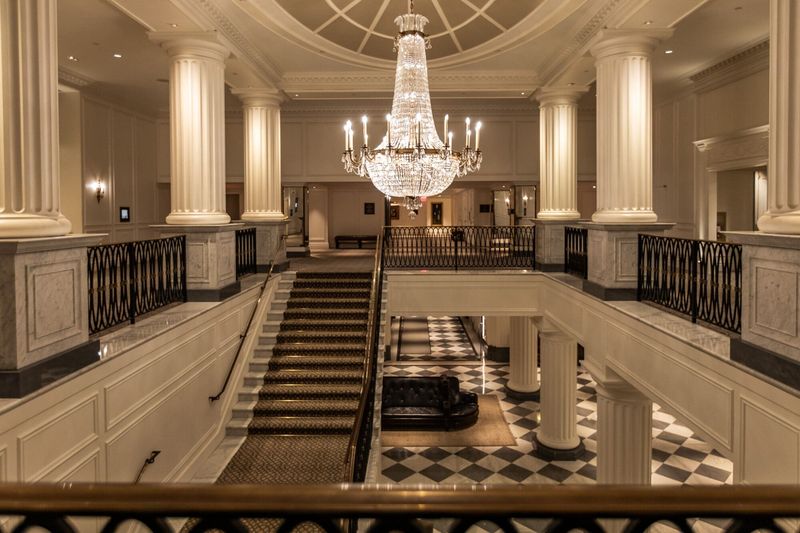
The Barclay Hotel, a luxurious retreat in the 1920s, was known for its grand interiors and refined ambiance. Located in midtown Manhattan, it attracted an elite clientele with its impeccable service.
Its elegant design and prime location made it a popular choice for both leisure and business travelers. Over time, economic pressures led to significant changes in its operation.
Despite these challenges, the Barclay’s legacy endures, a testament to New York’s rich hospitality history. Its story continues to inspire nostalgia for an era of elegance and grace.
The Savoy-Plaza Hotel
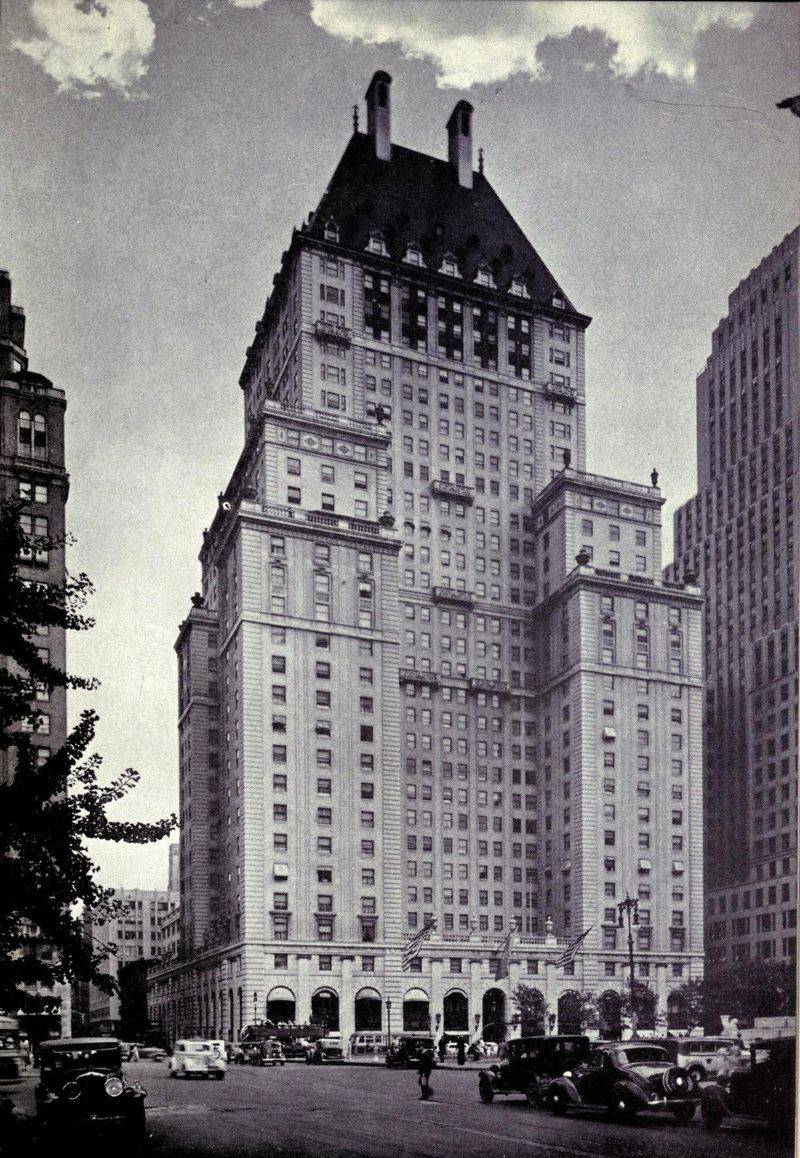
The Savoy-Plaza Hotel, with its Art Deco architecture, was an emblem of mid-20th-century luxury. Located on Central Park South, it offered breathtaking views and opulent accommodations.
Known for its glamorous events and high-profile guests, it was a cultural landmark. However, the hotel was demolished in 1965 to make way for new developments.
Though the building is gone, the Savoy-Plaza’s legacy lives on in the memories of its grandeur and iconic history. A symbol of New York’s ever-evolving landscape, it remains a cherished part of the city’s heritage.
The Taft Hotel
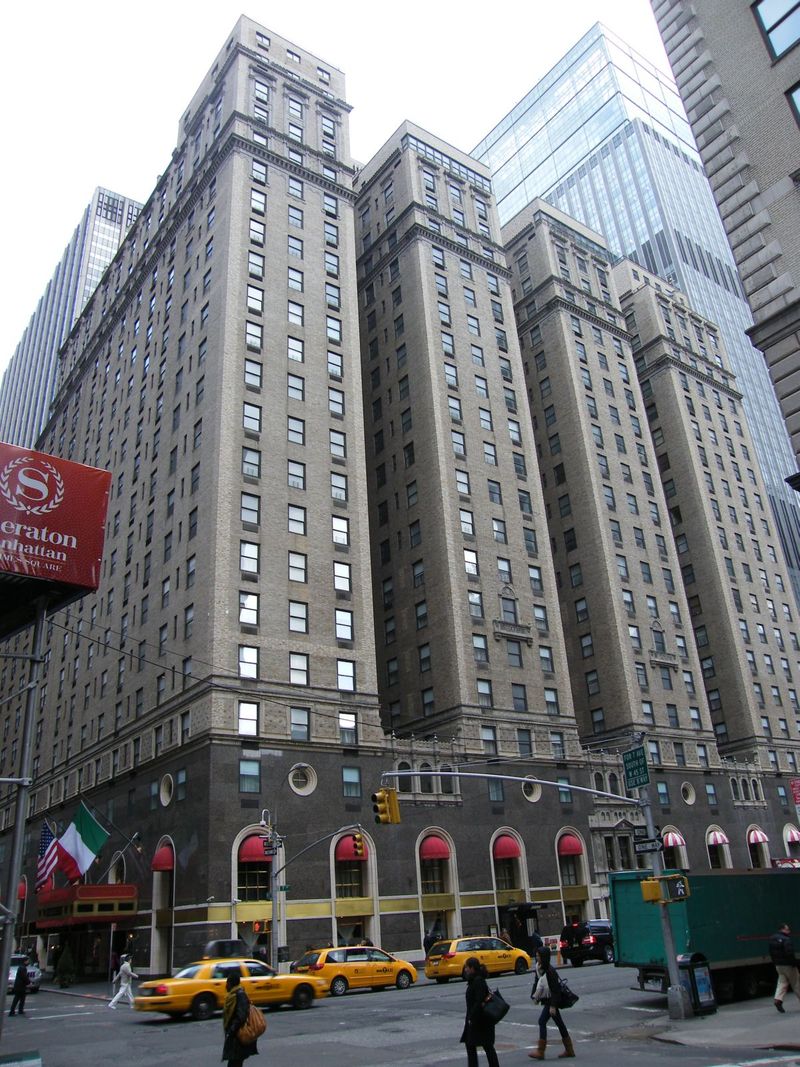
The Taft Hotel, once a bustling hub on Broadway, was known for its vibrant atmosphere and vintage charm. Opened in 1926, it quickly became a favorite among theatergoers and tourists.
Its prime location and elegant interiors made it a popular choice, but changing times led to its decline. By the 1980s, it was repurposed, altering its original character.
Nevertheless, the Taft Hotel’s spirit endures in the stories of its lively past. A symbol of New York’s dynamic entertainment scene, it continues to captivate those who remember its vibrant history.
The Gramercy Park Hotel (original interior)

The original Gramercy Park Hotel was a blend of artistic charm and historic elegance. Known for its unique interiors and creative ambiance, it attracted artists and bohemians alike.
Its proximity to Gramercy Park added to its allure, making it a cultural hub in the city. Renovations over time altered its original design, changing its character.
Despite these changes, the Gramercy Park Hotel’s legacy lives on in its contribution to New York’s artistic and cultural tapestry. A beloved icon, it remains a symbol of the city’s creative spirit.
The Hotel Pennsylvania (original interiors)
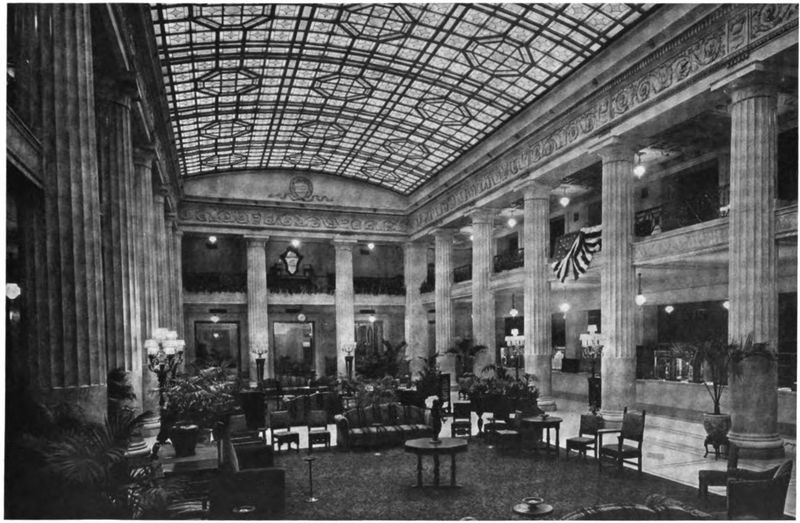
The Hotel Pennsylvania’s original interiors were a testament to early 20th-century grandeur. Known for its lavish design and prime location, it was a favorite among travelers and locals.
Its grand ballrooms and elegant dining spaces hosted countless events, making it a cultural landmark. However, modern developments led to significant changes, altering its original charm.
Today, the memories of the Hotel Pennsylvania’s elegance linger, a cherished chapter in New York’s storied past. Its legacy continues to inspire those who appreciate the city’s rich history and vibrant culture.
The Biltmore Hotel
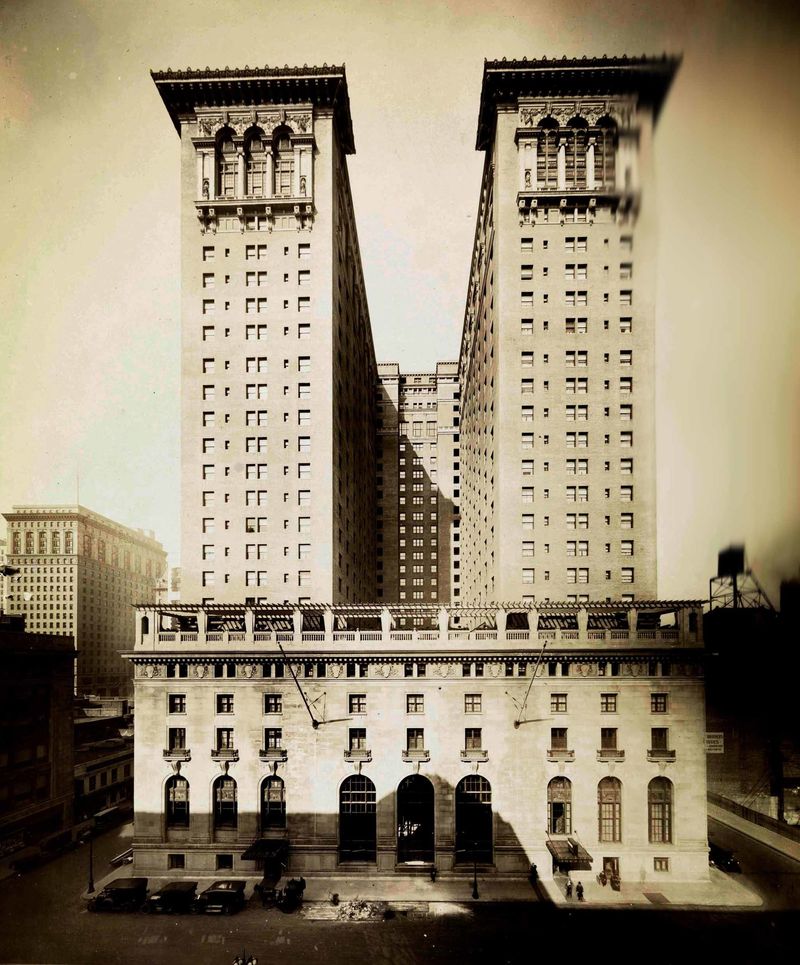
The Biltmore Hotel, renowned for its elegance and grandeur, was a symbol of early 20th-century luxury. Located in midtown Manhattan, it attracted an elite clientele with its exquisite interiors.
Known for its lavish events and sophisticated ambiance, it was a cultural landmark in its time. Economic pressures and urban development led to its closure in the late 20th century.
Though the building is no longer, the Biltmore’s legacy endures in the stories of its illustrious past. A cherished memory in New York’s history, it continues to inspire nostalgia for an era of elegance.
The Plaza Hotel (Fifth Avenue)
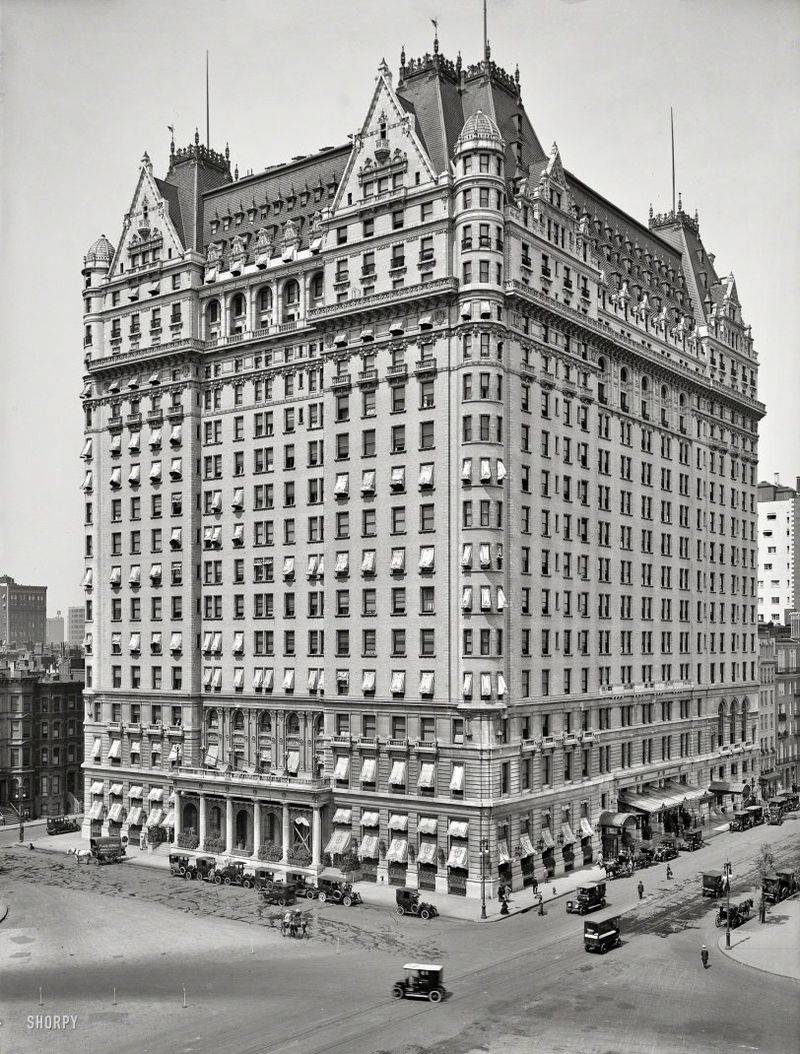
Once the epitome of elegance, The Plaza Hotel on Fifth Avenue was more than just a place to stay. Opening its doors in 1907, it quickly became a cultural landmark. The hotel hosted glamorous events and countless celebrities. Its architectural beauty was rivaled only by its luxurious interiors. Imagine the bustling lobby where deals were made and stories were shared.
Sadly, the hotel closed its doors in the 1970s, making way for modern development. Though its physical presence is gone, The Plaza on Fifth lives on in the memories of those who experienced its grandeur.

